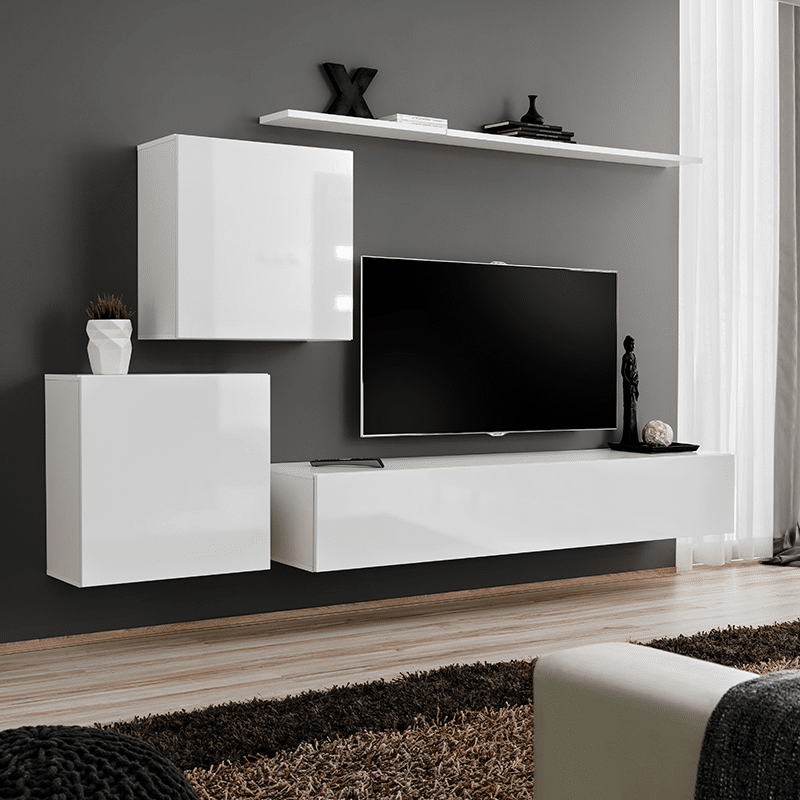
Fixing furniture of any kind to Gasbeton walls is quite simple; you just need to know how to do it.
Inside, a wall made of perforated brick is decidedly different from a plasterboard slab. Similarly, a laminated wood wall is different from a "solid" wall made of Gasbeton blocks, and so on for countless other construction materials. For this reason, there are specially designed fixing systems, also known as anchors, for every type of masonry. There are also various appropriate fixing systems for Gasbeton aerated concrete walls, allowing the attachment of various loads, from small pictures to large wall cabinets, to even heavier systems for ventilated facades.
Important Factors
In the case of Gasbeton aerated concrete walls (also called cellular concrete), three factors need to be considered to understand how to fix furniture: the density of the blocks used to build the wall, the weight of the furniture to be fixed, and the number of fixing points. Gasbeton is available in different densities, and the higher the density, the greater the load each anchor point can support. Another factor to consider is the thickness of the wall, as longer anchors can support heavier loads, providing more security. It's also essential to avoid using the percussion function, present in some drills, when making the hole, and to remove the dust before inserting the anchor.
In practical terms, the most common densities of Gasbeton are the 480 kg/m3 of the EVOLUTION line, used for load-bearing walls, partition walls, and partitions, and the 300 kg/m3 of the ACTIVE line, used for non-load-bearing external walls that are highly insulating.

The Right Anchor for Every Load
It's always important to assess how the weight is distributed on the fixing points; a heavy load may not be problematic if the weight is supported by several anchors, while a less heavy load can cause issues if it needs to be supported by a single anchor.
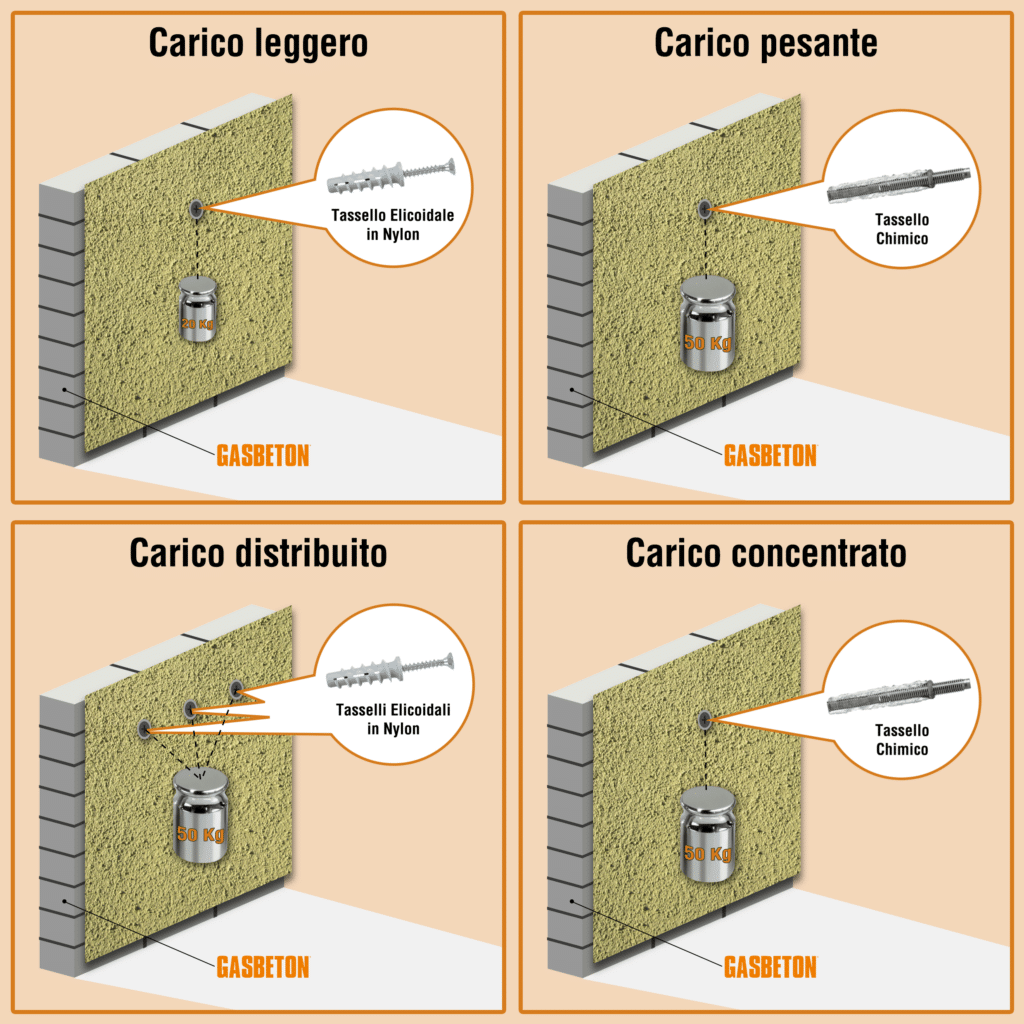
There is a wide range of combinations of sizes, shapes, and types of fixing systems that allow finding the ideal solution for even the most particular needs. However, we can summarize the system to use based on the load with the following chart.
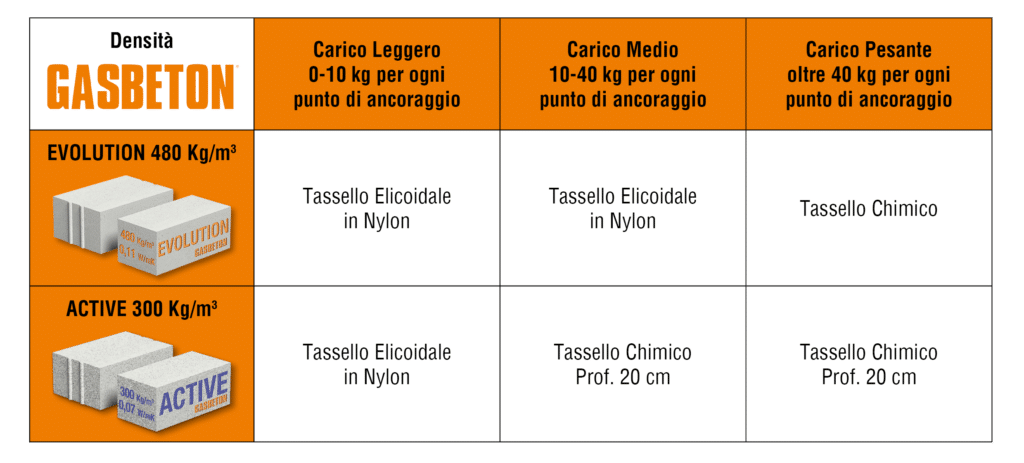
Nylon Screw Anchors
These are the simplest solution. As with the most common anchors, you just need to drill a hole for the anchor with a drill and insert the anchor using a hammer or by screwing it into the hole. Then, the load is fixed by inserting the screw into the anchor and screwing it in to expand the part of the anchor inserted into the wall.
This system is suitable for fixing any light load, such as pictures, lights, mirrors, and small shelves (loads that do not exceed 10 kg per fixing point), but it can also be used for heavier loads on blocks with higher density. For example, this simple system is suitable for loads up to 40 kg for anchoring on Gasbeton EVOLUTION walls.
Extended Nylon Anchors
They are an excellent solution for fixing even significant loads using the classic and simple plastic anchor plus screw system. They are called "extended" because they have a greater length that allows them better resistance to loads, although due to their length, they cannot be used on walls of low thickness.
They allow fixing objects with thicknesses of several centimeters with a passing fixing.
For example, they are used to fix window frames or to attach heavy wall cabinets to external walls, which usually have adequate thickness for their use.
Chemical Anchors
They are the safest and most resistant solution for fixing heavy loads, especially on low-density blocks, but their use is slightly more complex than nylon anchors because they require the use of hardening plastic resins.
A practical example of using this system is the fixing of a heavy ventilated facade structure on an ACTIVE Gasbeton aerated concrete wall, which is the least dense and most insulating block in the GASBETON line. Thanks to the use of chemical anchors with a deep hole of 20 cm, it is possible to fix even the heaviest loads on low-density aerated concrete walls.
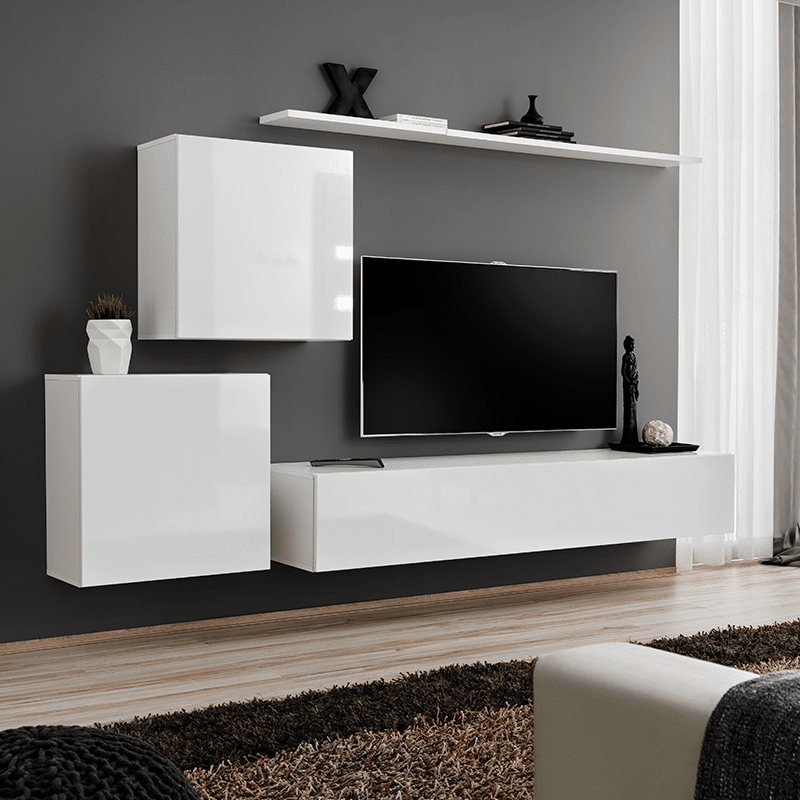

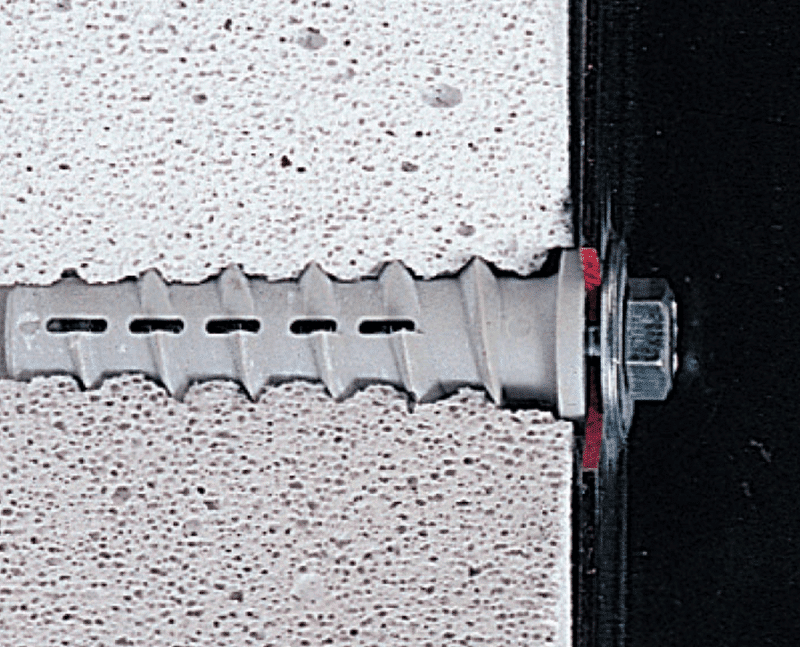

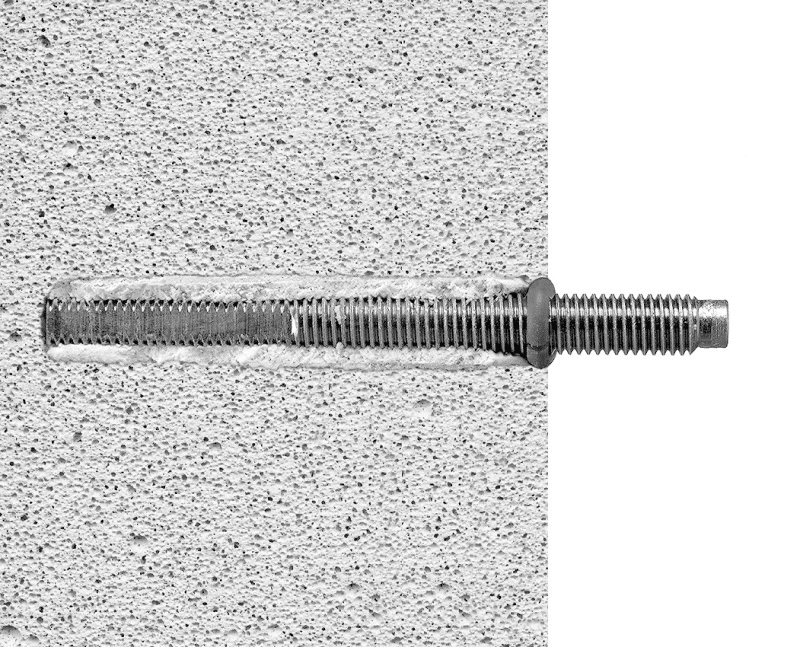

![[10:49 AM] Massimo Ravara Multi purpose fastening for aerated concrete [10:49 AM] Massimo Ravara Multi purpose fastening for aerated concrete](https://attardbros.com/wp-content/uploads/2023/12/100632940s_72e3ea35c3-min-1.png)

